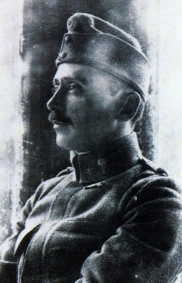
Encephalitis lethargica

Encephalitis lethargica is an atypical form of encephalitis. Also known as 'sleeping sickness' or 'sleepy sickness' (distinct from tsetse fly-transmitted sleeping sickness), it was first described in 1917 by the neurologist Constantin von Economo and the pathologist Jean-René Cruchet.They would be conscious and aware – yet not fully awake; they would sit motionless and speechless all day in their chairs, totally lacking energy, impetus, initiative, motive, appetite, affect or desire; they registered what went on about them without active attention, and with profound indifference. They neither conveyed nor felt the feeling of life; they were as insubstantial as ghosts, and as passive as zombies.Does the present volume solve the 'riddle' of EL, which… has been referred to as the greatest medical mystery of the 20th century? Unfortunately, no: but inroads are certainly made here pertaining to diagnosis, pathology, and even treatment.' Encephalitis lethargica is an atypical form of encephalitis. Also known as 'sleeping sickness' or 'sleepy sickness' (distinct from tsetse fly-transmitted sleeping sickness), it was first described in 1917 by the neurologist Constantin von Economo and the pathologist Jean-René Cruchet. The disease attacks the brain, leaving some victims in a statue-like condition, speechless and motionless. Between 1915 and 1926, an epidemic of encephalitis lethargica spread around the world. Nearly five million people were affected, a third of whom died in the acute stages. Many of those who survived never returned to their pre-existing 'aliveness'. No recurrence of the epidemic has since been reported, though isolated cases continue to occur. Encephalitis lethargica is characterized by high fever, sore throat, headache, lethargy, double vision, delayed physical and mental response, sleep inversion and catatonia. In severe cases, patients may enter a coma-like state (akinetic mutism). Patients may also experience abnormal eye movements ('oculogyric crises'), parkinsonism, upper body weakness, muscular pains, tremors, neck rigidity, and behavioral changes including psychosis. Klazomania (a vocal tic) is sometimes present. The causes of encephalitis lethargica (EL) are uncertain. Some studies have explored its origins in an autoimmune response, and, separately or in relation to an immune response, links to pathologies of infectious disease — viral and bacterial, e.g., in the case of influenza, where a link with encephalitis is clear. Postencephalic Parkinsonism was clearly documented to have followed an outbreak of EL following 1918 influenza pandemic; evidence for viral causation of the Parkinson's symptoms is circumstantial (epidemiologic, and finding influenza antigens in EL patients), while evidence arguing against this cause is of the negative sort (e.g., lack of viral RNA in postencephalic parkinsonian brain material).In reviewing the relationship between influenza and EL, McCall and coworkers conclude, as of 2008, that while 'the case against influenza less decisive than currently perceived… there is little direct evidence supporting influenza in the etiology of EL,' and that 'lmost 100 years after the EL epidemic, its etiology remains enigmatic.' Hence, while opinions on the relationship of EL to influenza remain divided, the preponderance of literature appears skeptical. German neurologist Felix Stern who examined hundreds of EL patients during the 1920s pointed out that the EL would happen chronically. The early symptom would be dominated by sleepiness or wakefulness. A second symptom would lead to an oculogyric crisis. The third symptom would be recovery, followed by a Parkinson-like symptom. If patients of Stern followed this course of disease, he diagnosed them with EL. Stern suspected EL to be close to polio without evidence. Nevertheless, he experimented with the convalescent serum of survivors of the first acute symptom. He vaccinated patients with early stage symptoms and told them that it might be successful. Stern is author of the 1920's definitive book Die Epidemische Encephalitis (1920 and 2nd ed. 1928). Stern was driven to suicide during the Holocaust by the German state, his research forgotten. In 2010, in a substantial Oxford University Press compendium reviewing the historic and contemporary views on EL, its editor, Joel Vilensky of the Indiana University School of Medicine, quotes Pool, writing in 1930, who states, 'we must confess that etiology is still obscure, the causative agent still unknown, the pathological riddle still unsolved…', and goes on to offer the following conclusion, as of that publication date:.mw-parser-output .templatequote{overflow:hidden;margin:1em 0;padding:0 40px}.mw-parser-output .templatequote .templatequotecite{line-height:1.5em;text-align:left;padding-left:1.6em;margin-top:0} Subsequent to publication of this compendium, an enterovirus was discovered in EL cases from the epidemic. In 2012, Oliver Sacks acknowledged this virus as the probable cause of encephalitis lethargica.
